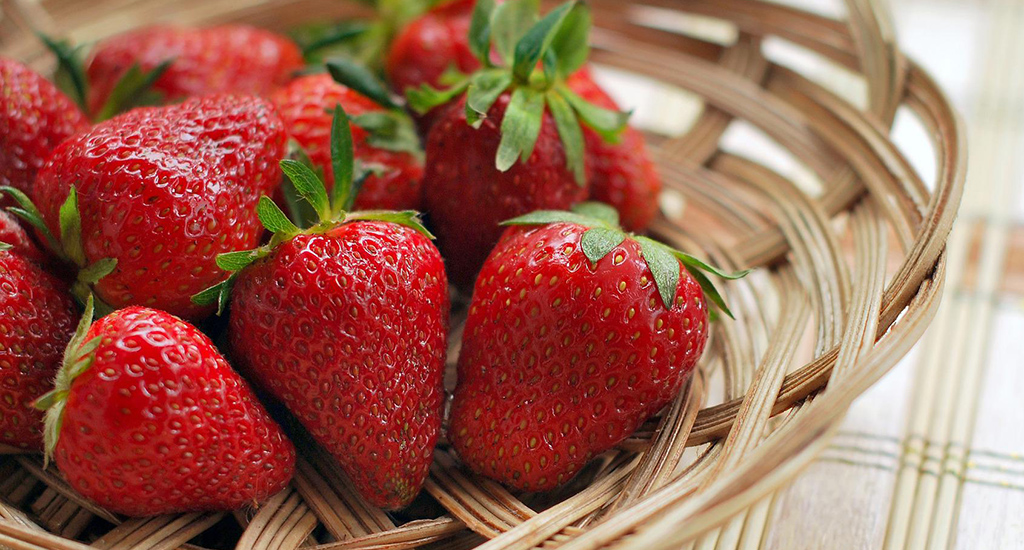
Gasoo – the strawberry bowl of Kashmir
Farmers who once grew paddy are tasting commercial success after switching to strawberry cultivation, making Gasoo village a hub that supplies strawberries to almost the entire valley.

Farmers who once grew paddy are tasting commercial success after switching to strawberry cultivation, making Gasoo village a hub that supplies strawberries to almost the entire valley.
If you bite into juicy red strawberries in Kashmir, chances are the fruits are from the village of Gasoo.
All you see in the fields of Gasoo are dense, low-lying foliage. But a closer look reveals men and women busily plucking ripe red strawberries that are hidden underneath the foliage.
Customers like Gazala, a government teacher from Srinagar and a mother of two, visit Gasoo during the harvest season to buy fresh strawberries directly from the farmers.
“It’s always our favourite. Apart from children, my husband and I too wait eagerly for local strawberries for their freshness and taste. During the season, I often visit the farmers in Gasoo to collect the fresh fruit,” said Gazala.
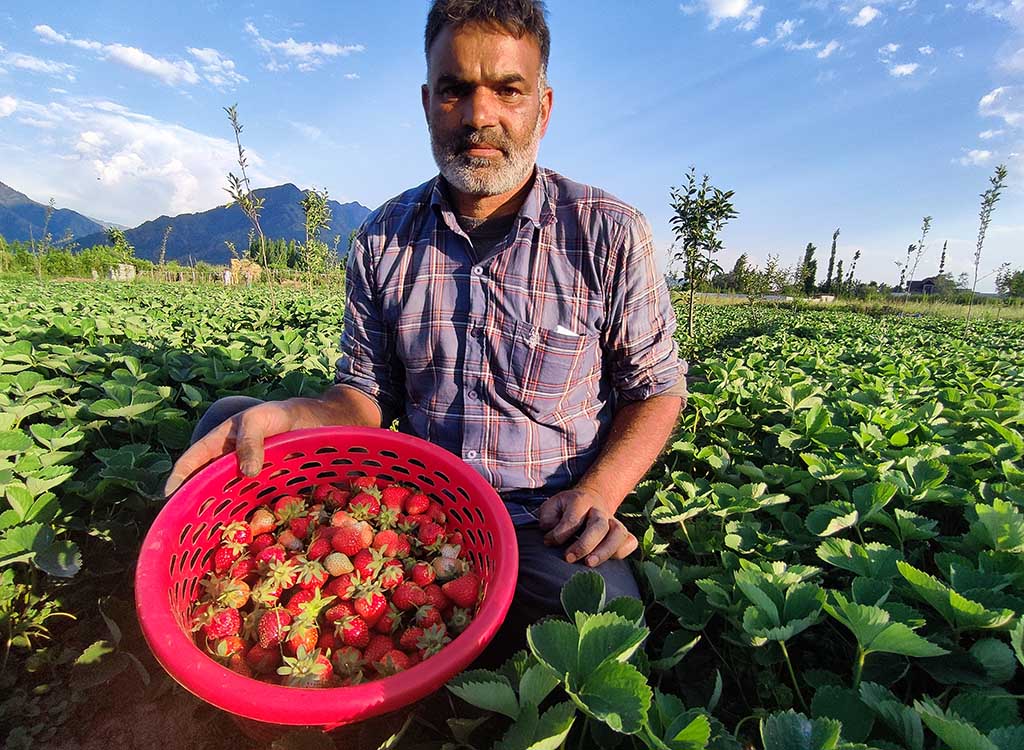
Abdul Hameed Dar is one such farmer. Situated in the outskirts of Srinagar, his picturesque farm spreads over four kanals (one-eighth of an acre) of land.
Set in a perfect pattern, the long rows of plants stretch beyond Dar’s land as almost every field in Gasoo now grows strawberries in over 100 kanals. For the red juicy fruits that tease the taste buds of buyers also fill the wallets of the farmers.
About a decade ago, these farms in Gasoo used to have paddy crops.
Dar’s uncle, Ghulam Nabi Dar, was encouraged by a relative to turn towards strawberry cultivation in 2012. Dar says he was the first one to introduce strawberry cultivation in the village. Now there are about 30 families in the village growing strawberries.
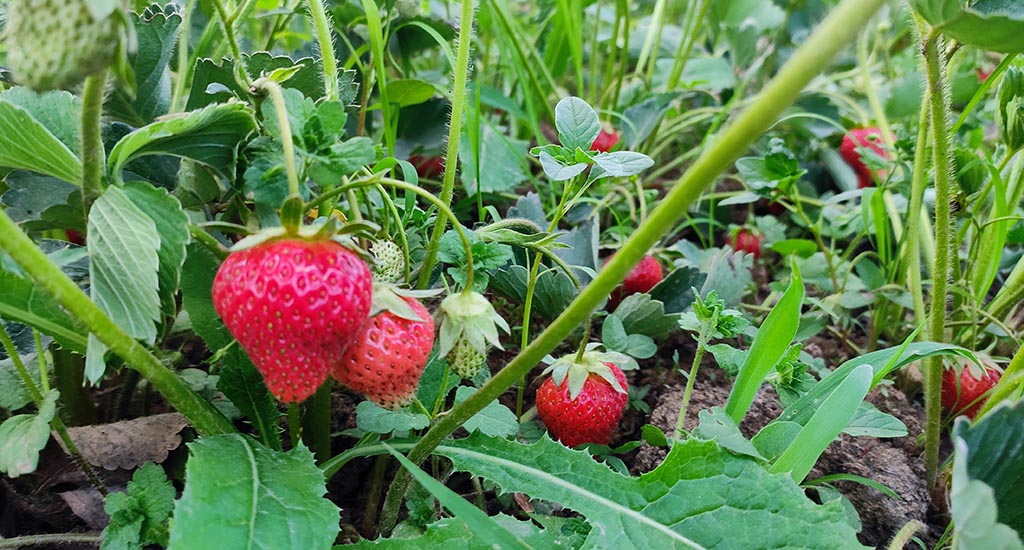
These farmers have slowly transformed their paddy fields into strawberry farms earning a handsome income.
The senior Dar admits that in the initial years the income from the crop was meagre.
“But with time our farming improved and the returns started to swell,” he said. “Seeing our success, our fellow villagers too started to convert their paddy fields into strawberry farms.”
Besides good demand and returns, Ghulam Dar said that there are two main reasons for this swift transformation. The crop needs only seasonal care. And the plants do not need any fertilisers or pesticides, making Gasoo’s strawberries purely organic to boot.
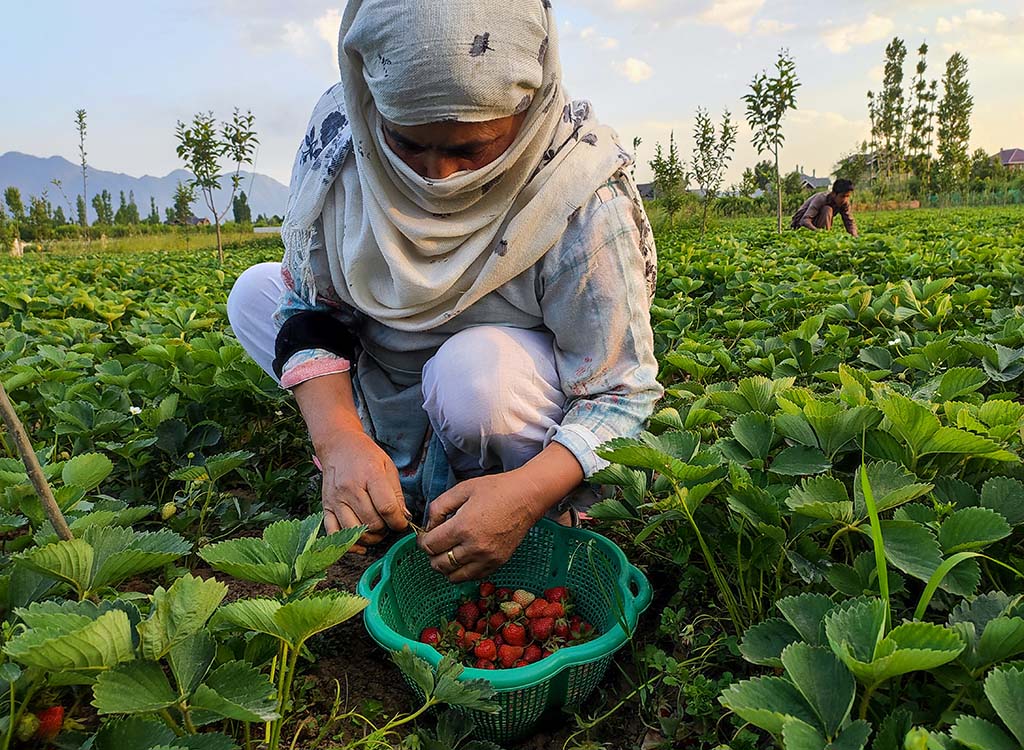
For farmers like Ghulam Rasool Mir, a bunch of strawberries translates into a wad of cash. (ALSO READ: Strawberry cultivation brings sweet success to farmers)
“Returns in terms of money are enough to compensate for the toil,” Mir told Village Square. “I earn Rs 50,000 to 70,000 per kanal annually from growing strawberries.”
Strawberries are firstcomers among the valley’s fruits, but it is a super short season.
Strawberry farming involves intensive pruning and de-weeding in March and April. Then the harvest starts in mid-May and lasts for only 10 to 15 days.
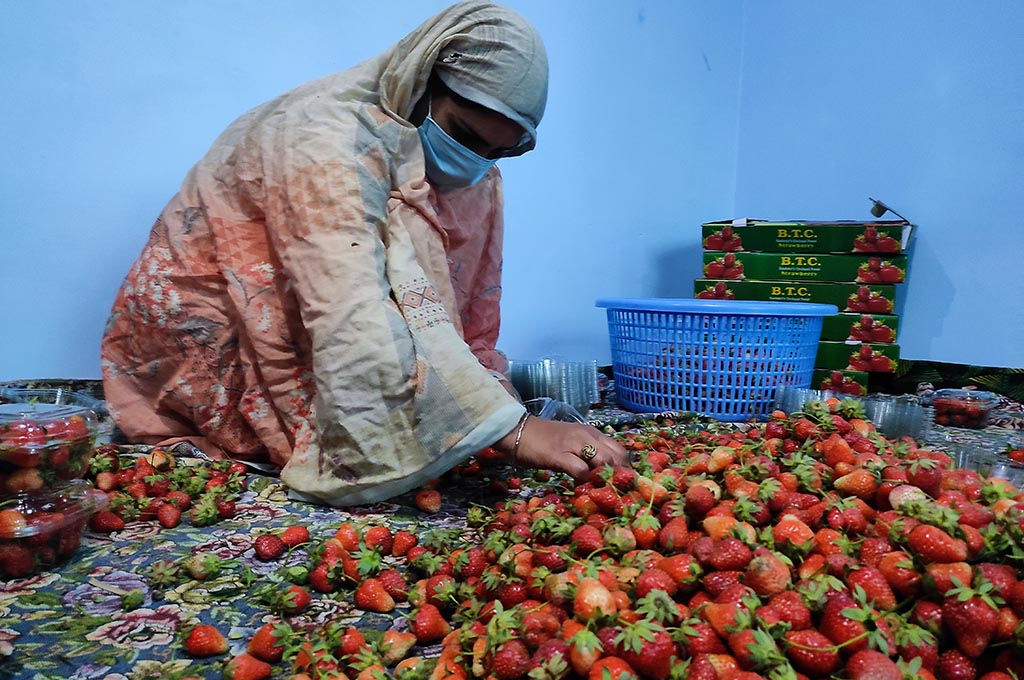
On top of that the fruits have a very small shelf life. A ripe strawberry only lasts 24 to 48 hours in terms of optimum consumption. So efficient, on-time distribution of the fruit to market is crucial. Farmers generally pluck the strawberries in the evening and take them to markets the very next morning.
Farmers sell the fruits packed in plastic bowls or trays. Each bowl of fruit weighs about 350 grams and fetches Rs 40 to 60 from the wholesale mandi. A tray which contains eight bowls each weighing about 250 grams is sold at Rs 300 to 400 in the market. (ALSO READ: Bihar farmers taste success with sweet strawberries)
Most of the fruit from Gasoo is sold in Parimpora at a wholesale produce mandi (market) in Srinagar.
“Strawberries supplied to different parts of the valley come mostly from Gasoo,” said Mushtaq Ahmad, a fruit dealer at Parimpora.
Experts believe that the strawberry crop has a tremendous economic potential. According to Dr Khalid Mushtaq, who heads the Fruit Science Department at Sheri Kashmir University of Agriculture Science and Technology (SKUAST), the potential of the fruit in terms of revenue and employment generation is tremendous.
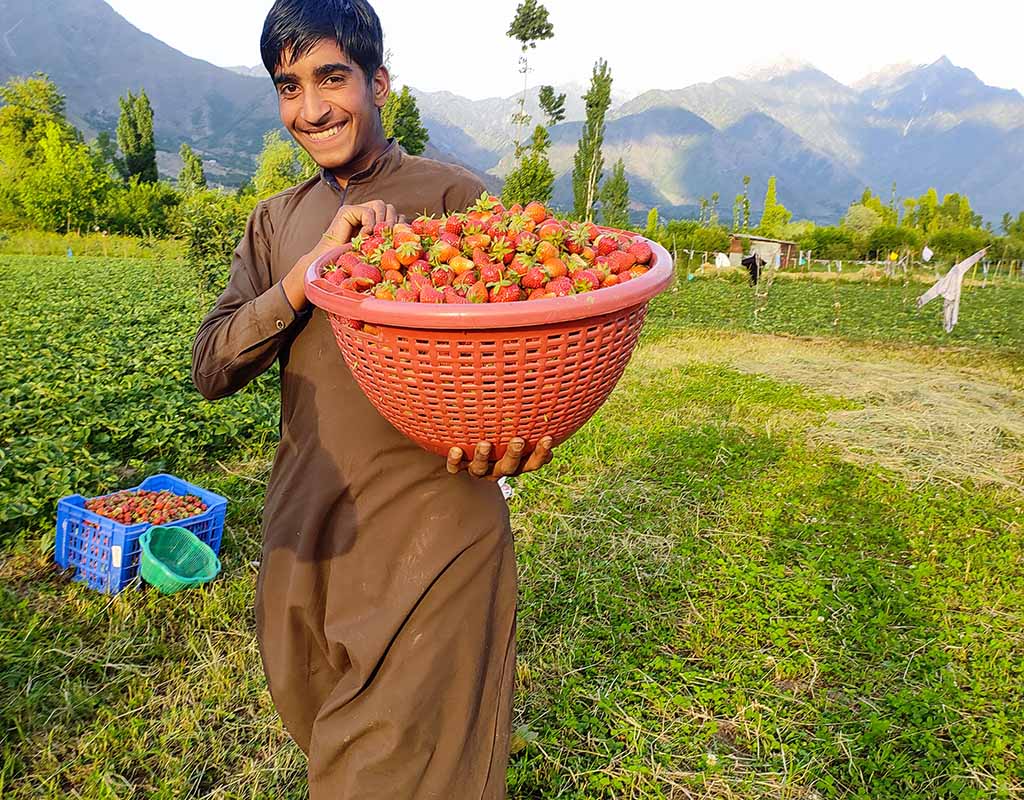
“The organically grown crop needs only seasonal care. It can be grown as a mixed crop with pears, apple or other local fruits,” Mushtaq told Village Square.
As Gasoo continues to produce thousands of metric tons of strawberry, the village has become an inspiration for other farmers. Amidst rising demand and good market, farmers from neighbouring districts like Pulwama, Budgam and Ganderbal are taking up strawberry cultivation.
“It is a good choice of a crop. I recently converted my three-kanal land into a strawberry farm,” said Ghulam Mohammad Allaie, a farmer from Budgam. “Next year, I will be able to sell my first produce.”
Nasir Yousufi is a journalist based at Srinagar. Lead photo courtesy Pixabay.